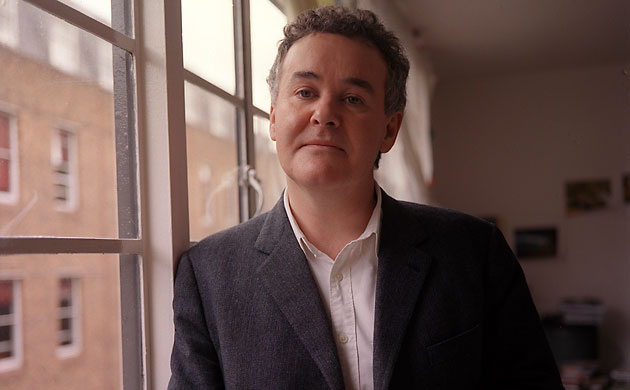Published in Contrappasso, coedited by Matthew Asprey Gear and Noel King, in 2015. — J.R.

AN INTERVIEW WITH
JONATHAN ROSENBAUM
Matthew Asprey Gear
JONATHAN ROSENBAUM is one of the most respected film critics in the United States. His many books include Moving Places: A Life in the Movies (1980/1995), Placing Movies: The Practice of Film Criticism (1995), Movies as Politics (1997), Movie Wars: How Hollywood and the Media Limit What Films You See (2000), Essential Cinema: On the Necessity of Film Canons (2004), and Goodbye Cinema, Hello Cinéphilia: Film Culture in Transition (2010).
Rosenbaum has also been a lifelong champion of Orson Welles. Many of his writings on Welles are collected in Discovering Orson Welles (2007). He also edited and annotated This Is Orson Welles (1992/1998), an assembly of the legendary Peter Bogdanovich-Orson Welles interviews.
This brief conversation for Contrappasso, an update on Rosenbaum’s recent activities, was conducted by email in early 2015.
ASPREY GEAR: Jonathan, you retired from your position as film critic at the Chicago Reader in 2008. You now teach, write as a freelancer, and republish your voluminous archive at www.jonathanrosenbaum.net. How have your priorities changed since 2008?
ROSENBAUM: I’m no longer a regular reviewer, and therefore I no longer have to keep up with current releases and see films that I don’t want to see (the majority of what I was seeing at the Reader). Read more
From Film Quarterly, Fall 2008 (Vol. 62, No. 1). I’ve more recently watched Curtis’s powerful and eye-opening Bitter Lake (2015) as well as his somewhat more paranoid HyperNormalisation (2016), also readily available for free on the Internet, which generally maintain the high level of the work discussed here. And I’m currently about halfway through Can’t Get You Out of My Head, which premiered on BBC last month. Some of my ambivalences about Curtis’ tendency to work both sides of the street — to criticize conspiracy theories and use them as seductive bait almost simultaneously; and to employ intellectual, non-intellectual, and even anti-intellectual means of persuasion in his storytelling with equivalent amounts of fervor — remain, but he’s too provocative to ignore.– J.R.

There’s been a steady improvement over the course of the three most recent BBC miniseries of Adam Curtis — The Century of the Self (2002, four hour-long episodes), The Power of Nightmares: The Rise of the Politics of Fear (2004, three hour-long episodes), and The Trap: What Happened to Our Dream of Freedom (2007, three hour-long episodes) —- both in terms of their intellectual cogency and persuasiveness and in terms of the interest of Curtis’s developing, innovative style of filmmaking. Read more



There seems to be a general agreement among cinephiles that Fritz Lang thought that Cinemascope was suitable only for filming snakes and funerals — despite the fact that Lang’s own Moonfleet (1955), shot in the related format of Metroscope, uses that rectangular shape quite effectively, as does the similarly anamorphic While the City Sleeps (1956).

But that wisecrack about snakes and funerals is more or less what Lang delivers while playing himself in Jean-Luc Godard’s Contempt (1963), also shot in a ‘Scope format. Yet as Pierre Gabastan points out in the Autumn 2016 issue of the French quarterly journal Trafic (No. 99), this is a remark stolen from Orson Welles — specifically, from a French translation of an article by Welles (reprinted in the same issue of Trafic) that appeared in the weekly magazine Arts (no. 673, 4-10 juin 1958), one of the journalistic mainstays of Godard, Truffaut, and Rivette during this period, which stated that CinemaScope was ideal for funeral processions in long shot and snakes in close-up. As Gabastan plausibly argues, Godard must have remembered this line and asked Lang to deliver it as his own.

If so, there might have been a faint sense of getting even on Lang’s part. Read more
My summer 2020 column for Cinema Scope. — J.R.

Well before the coronavirus pandemic kicked in, I’d already started nurturing a hobby of creating my own viewing packages on my laptop. This mainly consists of finding unsubtitled movies I want to see, on YouTube or elsewhere, downloading them, tracking down English subtitles however and whenever I can find them, placing the films and subtitles into new folders, and then watching the results on my VLC player. The advantages of this process are obvious: not only free viewing, but another way of escaping the limitations of our cultural gatekeepers and commissars— e.g., critics and institutions associated with the New York Film Festival, the New York Times, diverse film magazines (including this one), not to mention the distributors and programmers who pretend to know exactly what we want to see by dictating all our choices in advance. (I hasten to add for the benefit of skeptics that my interest in subtitling unsubtitled movies has nothing to do with liking certain films because they’re neglected: I’ve been employing the same practice lately with some of the films of Carol Reed, largely because I like combining the pleasures of reading with those of film watching.)


Case in point: the great Ukrainian/Romanian/Russian/Soviet writer-director Kira Muratova (1934–2018), whose wild and amazing works have never reached the consciousness of most North Americans, can sometimes be joyfully accessed in this manner. Read more





